Confirmed Presentations

Francesca Maria Frittella
The CAI-tool supported SI of numbers: Sit back, relax and enjoy interpreting?
Numbers represent the interpreting problem trigger par excellence. Recent studies suggest that in-booth computer-assisted interpreting (CAI) tools may support interpreters in the rendition of these complex and taxing elements. However, limited knowledge is as yet available about the conditions that make CAI-tool support for numbers effective.
This work contributes to deepening the analysis of the computer-assisted SI of numbers in all its complexity beyond the apparent simplicity of ASR- and AI-powered technological support. It argues that the effectiveness of CAI-tool support for numbers derives from the interplay of both machine and human factors.
The contribution draws on the usability test of SmarTerp – the first study of this kind ever conducted on a CAI tool to inform its development into an interpreter-centred solution. Participants (no 10 ITA A – ENG B/C conference interpreters) completed an SI test, a questionnaire and an interview.
Starting from design principles and hypotheses grounded in previous research and theory, the analysis integrated performance and perception data to identify usage problems and propose recommendations for the tool’s development. The analysis also shows the crucial role of the skills and strategies adopted by the interpreter using the tool and hence yields implications for training.
Francesca Maria Frittella is a conference interpreter for the languages Italian (native), English, German and Mandarin Chinese, PhD candidate at Shanghai International Studies University, conference interpreter trainer and co-founder of the online academy Interpremy. She is the author of the first research-based training programme on skills and strategies in the SI of numbers, which she regularly teaches for universities and professional associations. Her research interests include the interpretation of numbers, conference interpreter training,
instructional design, and in-booth CAI tool use.

Terence Lewis
Offline Tagalog Translator for Windows 10
The project to be described in this presentation had four aims:
to build a Tagalog<>English NMT engine
to create a translation app that can be used offline.
to ensure the app can be used in “native” MS-Windows and not just in WSL (Windows Subsystem for Linux).
to convert the app to Android, the most popular OS in South-East Asia The presentation will describe the steps taken to train a Neural Machine Translation engine starting from a baseline of around 250,000 sentence pairs. The approached used has ranged from extracting phrase pairs from tourist phrase books to “back-translation” of Wikipedia articles. The methodology used is likely to be useful for building other NMT models for language pairs where scarce resources are available. A “native” Windows executable has been built from the code cloned from https://github.com/OpenNMT/CTranslate2. It runs without any need for an Internet connection. The fourth aim (conversion to Android) has not yet been achieved.
I have spent most of my working life – the last 50 years – in the “language business”. After working as a translator and lexicographer I ran a translation business for some 12 years during the course of which my interest in machine translation arose. I taught myself Java at the age of 50 and then went on to write a Dutch-English rule based machine translation program which was used to translate documentation for major Dutch infrastructure projects.
For the past 4 years I have been working in the field of Neural Machine Translation and develop custom NMT models for industrial and business clients. In view of the proliferation of cloud based vendors in the major language pairs I have decided to focus of low resource languages.
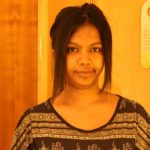
Jeevanthi Liyanapathirana

co-author:
Pierrette Bouillon
In international organizations, the growing demand for translations has increased the need for post-editing. Different studies show that automatic speech recognition systems have the potential to increase the productivity of the translation process as well as the quality. In this talk, we will explore the possibilities of using speech in the translation process by conducting a post-editing experiment with three professional translators in an international organization. Our experiment consisted of comparing three translation methods: speaking the translation with MT as an inspiration (RESpeaking), post-editing the MT suggestions by typing (PE), and editing the MT suggestion using speech (SPE). BLEU and HTER scores were used to compare the three methods. Our study shows that translators did more edits under condition RES, whereas in SPE, the resulting translations were closer to the reference according to the BLEU score and required less edits. Time taken to translate was the least in SPE followed by PE, RES methods and the translators preferred using speech to typing. These results show the potential of speech when it is coupled with post-editing. To the best of our knowledge, this is the first quantitative study conducted on using post-editing and speech together in large scale international organizations.
Jeevanthi Liyana Pathirana is a PhD student in the FTI, University of Geneva. She has worked as translation technologist in international organizations and holds a Masters of Philosophy in Computational Linguistics in the University of Cambridge, UK.
Pierrette Bouillon has been Professor at the Faculty of Translation and Interpreting(FTI), University of Geneva since 2007. She is currently Director of the Department of Translation Technology (referred to by its French acronym TIM) and Dean of the FTI. She has numerous publications in computational linguistics and natural language processing, particularly within speech-to-speech machine translation, accessibility and pre-editing/post-editing.

Emmanuelle Esperança-Rodier
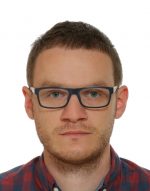
co-author:
Damian Frankowski
DeepL vs Google Translate: who’s the best at translating MWEs from French into Polish? A multidisciplinary approach to corpora creation and quality translation of MWEs
This article proposes a multidisciplinary approach to the creation of parallel French and Polish corpora annotated with multi-word expressions and the analysis of neural machine translation errors of annotated MWEs, from French into Polish. Our work first aims at building parallel FR-PL corpora from a French News corpus, taken from the WMT 2010 corpora of 40 000 words, by automatically translating them into Polish using the main commercial systems DeepL and Google Translate. The French source corpus has already been manually annotated with MWE, using the typology developed at LIDILEM (Tutin and Esperança-Rodier 2019). In a second step, the quality of the MWE translation of the FR-PL parallel corpora has been evaluated by annotating the translation errors creating a new error typology based on DQF-MQM (Lommel & al., 2018) and the linguistic features of MWE translations using the ACCOLÉ platform (Brunet-Manquat and Esperança-Rodier, 2018). As a start, we have selected 154 sentences (4 332 French words) from the already MWE annotated French Document and translated them into Polish using DeepL (3 599 Polish words), Google Translate (3 519 Polish words). The first general result shows that for the French to Polish language pair, DeepL translates MWE better than Google Translate.
Emmanuelle Esperança-Rodier is a lecturer at Université Grenoble Alpes (UGA), France, Laboratoire d’Informatique de Grenoble (LIG), where she teaches English for Specific Purpose. After defending a PhD in computational linguistics, titled “Création d’un Diagnostiqueur Générique de Langues Contrôlées, avec application particulière à l’Anglais Simplifié”, she worked as a post-editor in a translation agency. Back at University, she participated in IWSLT and WMT evaluation campaigns, as well as in several LIG projects. She now works on the evaluation of MT systems based on competences and focused on tasks, translation error analysis and multilinguism.
Damian Frankowski, graduate of English studies at the Institute of English studies at the Jagiellonian University in Krakow, Poland; linguistics student at LLASIC UGA in Grenoble, France and intern at LIG UGA laboratory. His field of interests include linguistics, machine translation, NLP, MWE expressions and computational linguistics. In his research, he is focusing on the investigation and evaluation of machine translation quality of MWE expressions from French into Polish. The previous paper concerned the influence of English as L1 on learners of French in the context of false friends between English and French.

Claudio Fantinuoli
co-authors:

Giulia Marchesini

David Landan
Interpreter Assist: Fully-automated real-time support for Remote Interpretation
High-quality interpretation requires linguistic and factual preparation as well as the ability to retrieve information in real-time. This situation becomes particularly relevant in the context of remote simultaneous interpreting (RSI) where time-to-event may be short, posing new challenges to professional interpreters and their commitment to delivering high-quality services. In order to mitigate these challenges, we present Interpreter Assist, a computer-assisted interpreting tool specifically designed for the integration in RSI scenarios. Interpreter Assist comprises two main feature sets: an automatic glossary creation tool and a real-time suggestion system. In this paper, we describe the overall design of our tool, its integration into the typical RSI workflow, and the results achieved on benchmark tests both in terms of quality and relevance of glossary creation as well as in precision and recall of the real-time automatic suggestion system.
Claudio Fantinuoli (Dr. phil) is Senior Lecturer and Researcher in Interpreting and Natural Language Processing at University of Mainz in Germersheim. His current research focuses on computer-assisted interpreting tools and machine interpreting. He also leads the AI development team at Kudo Inc. He is the founder of InterpretBank.
Giulia Marchesini is Analytical Linguist at KUDO. Her main interests are Corpus Linguistics, with a focus on Semantics and Pragmatics, and Computational Linguistics applied to Linguistic Quality Assurance.
David Landan works as an NLP Engineer at KUDO. He has over 15 years of industry experience in Computational Linguistics and NLP; his areas of particular interest are machine translation and speech recognition.
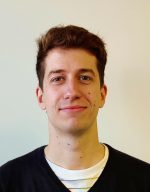
Laurens Meeus
Presenter
and co-author
co-authors:

Arne Defauw

Frederic Everaert

Oan Stultjens

Sara Szoc

Koen Van Winckel
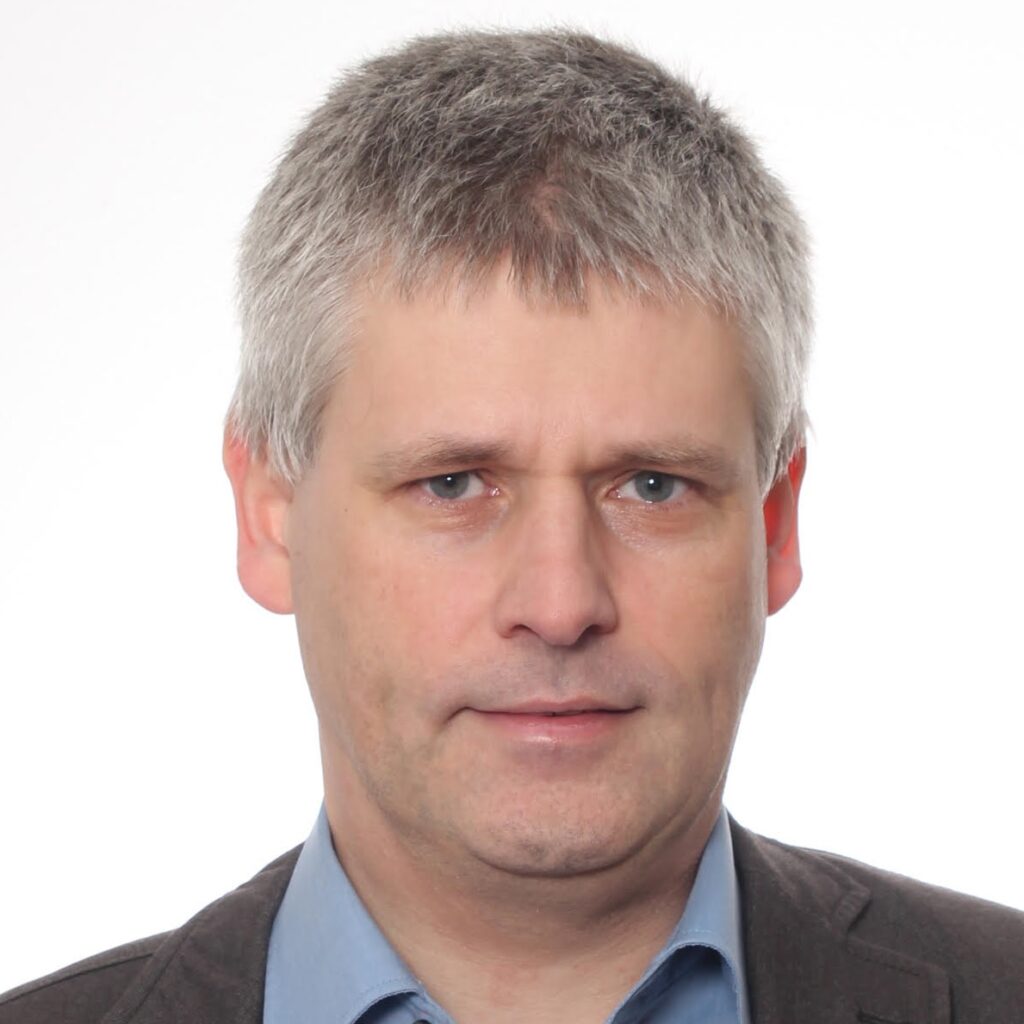
Tom Vanallemeersch

Joachim Van den Bogaert
OCCAM, or how to make non-digital documents available to everyone
The OCCAM project (OCR, ClassificAtion & Machine Translation, 2019-2021), funded by the Connecting Europe Facility programme of the European Commission (EC), aims at combining OCR (Optical Character Recognition) and translation technologies (ie. Machine Translation and Translation Memories) to support multilingual access to scanned documents (machine readable documents as well as images). The consortium, consisting of CrossLang, the University of Brno and the Ghent Centre of Digital Humanities, has developed document classification, OCR and translation systems for 5 languages (Dutch, French, German, Czech and English) and combined them in a reference implementation that will be made publicly available at the end of the project. The components are machine-learning based, open-sourced, and fully customizable. The OCCAM workflow is highly relevant in various scenarios with an urgent need for making non-digitized texts accessible in a multilingual context. This will be demonstrated with two use cases, covering the areas of European administration and the Digital Humanities.
Laurens Meeus started his career in machine learning as a PhD candidate in the group for image processing and interpretation at the UGhent. Since then, he joined CrossLang as a Machine Learning engineer. His primary interests include deep learning and open linked data.
Arne Defauw [bio text to follow]
Frederic Everaert graduated from University College Ghent with a bachelor in Applied Computer Science in 2017 and joined CrossLang in 2018 as a software developer. His primary interests include programming, web development and system administration.
Oan Stultjens is a full-stack software developer, and since a young age he has been constantly experimenting with new technologies and techniques. At CrossLang he primarily works on the development of digital projects.
Sara Szoc holds a PhD degree in Linguistics from the University of Leuven and joined the CrossLang team in Ghent in 2013. As a Language Engineer, she is mainly involved in projects focused on building and improving machine translation systems. Her primary interests in this area include engine customization, MT evaluation and Quality Estimation.
Koen Van Winckel holds a bachelor’s degree in Applied Informatics and joined CrossLang 8 years ago. As a software architect, he is involved in developing and rolling out multi-year projects. Special interests include microservice architecture, automating data flows and optimizing systems.
Tom Vanallemeersch holds a PhD in computational linguistics from the University of Leuven. At CrossLang, he customises machine translation systems and provides consultancy and presentations for the European Commission on various language technologies. Previous activities include development at Systran and DG Translation and project coordination at Dutch Language Union.
Joachim Van den Bogaert started his career in natural language processing as a researcher for the Centre for Computational Linguistics at the KU Leuven. Since then, he has been active as a research engineer in the machine translation industry for over ten years. He currently leads the CrossLang development team and is involved in funded projects on machine translation, ontology extraction and semantic reasoning.

Raquel Lázaro-Gutiérrez

Gabriel Cabrera Méndez
Development of technological competences: remote simultaneous interpreting explored
The technology applied to conference interpreting has always been behind the progress. Only the booths, receivers, infra-red radiators and interpreting consoles improved with new versions and a simple change from analogic to digital technology took place along many years of profession. However, COVID-19 pandemics skyrocketted the efforts devoted to improve remote simultaneous and consecutive interpreting and so videoconferencing is more and more present in our daily lives, and international events are using different platforms to connect people from all around the world. These platforms are slowly incorporating plugins that allow for the provision of interpretation, and improvements are daily made to ensure satisfactory results. Professional remote interpreters complain about the technical conditions in terms of sound, connectivity and video that make their job much more difficult than before the appearance of SARS-CoV-2. For that reason, we want to propose a contribution to the improvement of interpreters’ occupational health by the design of a training module that includes a series of robust and specific technical recommendation supported by professional active interpreters and telecommunication engineers in terms of sound, hardware, connectivity and implications in computer performance or health among other issues that must be included while training new current and new professionals.
Dr Raquel LÁZARO GUTIÉRREZ is an Associate Professor in the Department of Modern Philology at the University of Alcalá and teaches in the Degree in Modern Languages and Translation and the Master’s Degree in Intercultural Communication and Public Service Interpreting and Translation. She is a member of the FITISPos-UAH Research Group since 2001 and Vice-President of the European Association ENPSIT. She has been the PI of several projects such as “Analysis of face-threatening acts in telephone interpreting” or “Design, compilation and analysis of a multilingual corpus of mediated interactions on road assistance”.
Gabriel Cabrera Méndez is a professional translator and interpreter, holds a degree in Translation and Interpreting from the University of Granada and is a Professor of Translation Project Management and Computer Tools Applied to Translation in the Degree in Modern Languages and Translation at the University of Alcalá. He also teaches Interpretation for the Master in Conference Interpreting for Business at the University of Alcalá and is responsible for the Interpreting Quality Department at Dualia Teletraducciones as a professional external auditor since 2011. He has been working in telephone interpreting as his main professional activity since 2004. Founder member of the Spanish Association of Trainers, Researchers and Practitioners of Public Service Translation and Interpreting (AFIPTISP); former Vice-president of ANETI (Spanish Association of Translation and Interpreting Companies), expert on ISO standardization group for Translation and Interpreting and member of FITISPos-UAH research group.

Maria Stasimioti
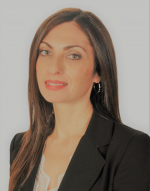
Vilelmini Sosoni
MT Quality and its effects on post-editors and end-users
Given the rise of neural machine translation (NMT) models, MT is increasingly used to produce raw translations to be further post-edited by translators (Lommel and DePalma, 2016). Post-editing (PE) is influenced by the MT system used and the number and the type of errors included therein (Koponen, 2012). In fact, the improved quality of the NMT system output requires the correction of fewer segments, but this does not always result in lower PE effort. Besides the effect that PE of different MT outputs may have on translators, a question arises about the effect that it may have on the intrinsic quality of a text or the extrinsic quality of the text. The aim of this study is twofold: it seeks to compare the temporal, technical and cognitive effort required for full PE of NMT output with the effort required for full PE of SMT output in the English-Greek language pair and also compare the extrinsic quality of final texts, i.e. its acceptability by end-users in terms of readability and comprehensibility. The findings indicate that the full PE of SMT output is more effortful, although it does not lead to translations of inferior quality in the context of the final end-user.
Maria Stasimioti is a PhD candidate at the Department of Foreign Languages, Translation and Interpreting at the Ionian University. She holds a BA in Translation Studies and an MA in Theory and Didactics of Translation from the same university. She has been working as a freelance translator and proofreader since 2010. She has taught Computer-Assisted-Translation and English for Specific Purposes (ESP) at the Ionian University and participated in the EU-funded project TraMOOC (Translation of Massive Open Online Courses, https://tramooc.eu/ ). Her research interests lie in the areas of Machine Translation (MT), Computer-Assisted-Translation (CAT), Post Editing (PE) and Cognitive Studies.
Dr Vilelmini Sosoni is a Senior Lecturer at the Department of Foreign Languages, Translation and Interpreting at the Ionian University in Corfu, Greece, where she teaches Legal and Economic Translation, EU texts Translation and Terminology, Translation Technology, Translation Project Management and Audiovisual Translation (AVT). In the past, she taught Specialised Translation in the UK at the University of Surrey, the University of Westminster and Roehampton University, and in Greece at the National and Kapodistrian University of Athens and the Institut Français d’ Athènes. She also has extensive industrial experience having worked as translator, editor, subtitler and interpreter as well as communications expert for the Hellenic Parliament. She holds a BA in English Language and Linguistics from the National and Kapodistrian University of Athens, an MA in Translation and a PhD in Translation and Text Linguistics from the University of Surrey. Her research interests lie in the areas of Translation of Institutional Texts, Machine Translation (MT), Corpus Linguistics, Cognitive Studies, and AVT. She is a founding member of the Research Lab “Language and Politics” of the Ionian University and a member of its “Bioinformatics and Human Electrophysiology Lab”. She is also a member of the Advisory Board and the Management Board of the European Master’s in Technology for Translation and Interpreting (EM TTI). As of November 2020, she is also the Events Manager of the Greek Chapter of Women in Localization. She has participated in several EU-funded projects, notably RESONANT, TraMOOC, Eurolect Observatory and Training Action for Legal Practitioners: Linguistic Skills and Translation in EU Competition Law, while she has edited several volumes and books on translation and published numerous articles in international journals and collective volumes.

Fernando Sánchez Rodas
This talk will introduce the latest version and possibilities of PETIMOD, an English <-> Spanish intermodal corpus of mediated and non-mediated texts and speeches rendered at the Committee on Petitions of the European Parliament. The objective is to extract and analyse personifications of institutions from a subset of PETIMOD (mediated vs. non-mediated English). We will apply advanced NLP techniques to enhance our extraction, which will be performed using the Query Corpus (QC) and the Named Entity Recognition (NER) modules of VIP (Corpas Pastor 2020). For the identification of personification metaphors, we will rely on the work of Lakoff and Johnson (1980) and Dorst (2011). Apart from shedding light in the overly understudied phenomenon of personification, the study is expected to measure the influence of multifactoriality in the salience (or not) of different translation and interpreting universals in EU settings. The resulting tendencies can be applied to train highly specialised machine translation systems on how to behave in very specific institutional translation tasks.
Fernando Sánchez Rodas has a BA in Translation and Interpreting (English and German) from the University of Cordoba, an MA in Audiovisual Translation: Localisation, Subtitling, and Dubbing (English and German) from the ISTRAD/University of Cadiz, and an MA in English/French/German – Spanish Specialised Translation (legal and financial) from the University of Cordoba. During 2017, he worked as a trainee translator in the Spanish Translation Unit of the European Parliament in Luxembourg. He is also experienced in the field of Spanish as a foreign language, where he holds an Expert Title in Teaching Methodology of Spanish as a Foreign Language from the University of Cordoba. In addition, he was Language Assistant of Spanish at the BG/BRG/BORG Kapfenberg and HLW Krieglach schools in Austria (2016-2017). Currently, he is an English teacher at the Department of Translation and Interpreting of the University of Malaga, and a Trainee Researcher with a Formación del Profesorado Universitario (FPU) contract awarded by the Spanish Ministry of Education, Science and Sport. His tasks include writing his PhD thesis under the direction of Prof. Corpas Pastor and collaborating in the research projects of Lexytrad, such as VIP (FFI2016-75831-P).

Dolores R. Guiñazú

Gabriela Escarrá
As language professionals, we must harness the power of standards. It is vital to follow processes to ensure the best quality of our jobs and to keep client’s data confidential and safe. This talk will provide an overview of ISO standards related to Translation Services (ISO 17100), Terminology (ISO 12616), Information Security Management (ISO 27001), Human Post-Editing of Machine Translation output (ISO 18587), and Legal Translation (ISO 20771).
ISO Standards provide us with quality templates that help us refine our existing processes and maintain a level of quality in translation services to boost clients’ satisfaction. The speakers will bring these international standards to life by sharing experiences and case studies, as well as by identifying areas where standards have a major role to play, such as Machine Translation (MT).
Participants will leave the session with a deep knowledge of available ISO Standards to fine-tune their daily jobs in a safe and organized way.
Dolores R. Guiñazú is a Certified Sworn (Court-Approved) Translator and Interpreter (Universidad del Salvador), and Copyeditor (Fundación Litterae & Fundeu) with an MBA in Marketing Management (Universidad del Salvador & Albany University in New York, United States). She holds two TAUS-certifications, one in Post-Editing, and another certification in Transcreation.
Dolores works for agencies and direct clients all over the world.
Gabriela Escarrá holds two university degrees: Certified Sworn Translator (University of La Plata) and English and Literature Teacher (University of La Plata). She is also TAUS-certified in Post-Editing and Transcreation.
Gabriela works as Translator, Editor, Post-Editor, and Transcreator specializing in Marketing and Corporate Communication for international agencies and direct clients.
Dolores and Gabriela have been lecturing on Quality Management, International Quality Standards and Post-Editing in Europe (Vienna), the United States (Boston, Miami, and Washington, DC), and South America (Argentina and Uruguay), including several virtual conferences. They have also written a book on Quality: Mejora continua de la calidad en la traducción (2019).

Alan K. Melby
AsLing Honorary Member

Catherine Marshall
Who Needs an MQM Scorecard?
The presentation will describe reference software called the MQM Scorecard. This software is free and open source. It runs in a browser, and organizations desiring to use it must install a copy on their own Web server. Then, they can set up TQE (translation quality evaluation) projects and assign them to evaluators. The results of a TQE project are available as both a Word document for human consumption and as a JSON file for machine processing.
MQM is intended for manual, reference-free evaluation of either human or machine translation.
The first version of MQM (Multidimensional Quality Metrics) was developed several years ago within the European Commission’s QT21 project. MQM is the basis of a forthcoming international standard.
This presentation will not only describe the MQM Scorecard but also provide some context on three related TQE standard that are currently under development.
So who needs an MQM Scorecard? Anyone who wants to use an MQM approach to measuring the quality of either human translation, post-edited machine translation, or raw (unedited) machine translation.
Alan Melby was raised in Indiana (USA). He still identifies as a Hoosier (https://en.wikipedia.org/wiki/Hoosier). Became fascinated with translation in the mid-1960s, while on study abroad in St Brieuc, France, as a high school student. Joined a machine translation project in 1970 while working on a Bachelor of Science in mathematics. By 1978, after obtaining a PhD in computational linguistics, experienced an intellectual crisis regarding the nature of language while an assistant professor of linguistics at Brigham Young University, concluding that unambiguous general language would be the ultimate prison but domain-specific language can and should be unambiguous. In 1979, shifted focus toward tools for human translators. In the 1980s, studied translation and became an ATA-certified French-to-English translator. In the 1990s, got into philosophy of language and wrote a book about human and machine translation (The possibility of Language) with a philosopher, Terry Warner.
In the 21st century, has focused on service to the translation profession, currently (2021) serving as vice-president of the International Federation of Translators (FIT), and collaborating on the development of translation-related standards, especially TBX (ISO 30042) for the exchange of information between terminological databases. In 2014, retired from full-time teaching as a full professor and became an emeritus professor and the president of a small non-profit (LTAC Global). Since 2015, standards work has expanded to translation quality evaluation within the MQM framework (Multidimensional Quality Metrics for Translation Quality Evaluation) under the umbrella of ASTM International (www.astm.org), a standards body.
Catherine Marshall is a student in the Master’s program in Linguistics at Brigham Young University (Provo, Utah, USA campus). She graduated from Brigham Young University earlier this year with a Bachelor’s in Portuguese and Translation/Localization. She works on the ATA Database project, where she oversees all data entry, including the annotation of ATA (www.atanet.org) certification exam errors using the MQM Scorecard.

Donna Xu – 徐红
Machine Translation and Controlled Language
It is said that controlled language can greatly facilitate machine translation. Baker, K., Franz A., Mitamura, T., and Nyberg, E. (1994) put forward the idea that the single most useful way to improve the accuracy of a machine translation system is to limit lexical ambiguity. This talk, and the accompanying paper, intends to test whether the argument holds water. This research first reviews the recent studies about controlled languages (CLs) and CL rules, creates grammatically controlled rules (GCRs) and lexically controlled ones (LCRs) in the technical domain, and processes a technical text using GCRs and LCRs separately. The control group is the text edited by LCRs and the experiment group is the text adjusted by GCRs. Then, the LCR text and the GCR text will be translated by customized RBMT and SMT. Automatic and human evaluation will be adopted to test not only whether the translation of the LCR-text is more accurate but also there is any difference in these two MT models. Finally, a retrospective interview is conducted to get feedback from the human raters. A tentative finding is that there is not enough evidence to demonstrate that controlling the vocabulary is the most effective way to improve the accuracy of machine translation.
Donna Xu has a Ph.D. in translation studies from Shanghai International Studies University. Before her Ph.D. studies, she taught English and Translation at Shanghai Normal University for seven years. She got her Master’s degree from Shanghai International Studies University and her Bachelor’s degree from Xi’an International Studies University. She has been an intern in Xinhua News Agency, working as a translator for several months. She has done numerous translations for the UN, FAO, WHO, and the Chinese government.
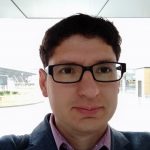
Konstantin Dranch
What We Learned from Training 200 Business Machine Translation Engines
We set up shop for machine translation training almost a year ago and since then trained 200 custom models for businesses and international organizations. In this presentation, I will share statistics on the model performance, especially on the improvement from training. The attendees will learn:
How translation memory size and quality affect training. What to expect from different brands: Google, Microsoft, Amazon, Globalese, ModernMT, Pangea, etc. What are the typical problems when implementing customized machine translation into TMS. This material is based on our case studies across a variety of clients and languages including languages such as French, German, Russian, Chinese, Portuguese, and Spanish. The presentation is intended for program managers with 2+ years of experience in localization and translation.
Konstantin Dranch is a localization industry researcher turned entrepreneur. He created the Language Technology map, Global Language Services market overview, Translation Management System comparison tools while leading research at Nimdzi Insights in 2017-2019. In 2020 he co-founded Custom.MT, a specialist company to train and evaluate Machine Translation engines from various brands. Konstantin is one of the top-20 localization industry influencers and he holds a volunteer role Communications Chair with the non-profit organization Association for Machine Translation in the Americas (AMTA).
Keynote Speaker

Sharon O’Brien
Can machines translate?
For many years we have witnessed limited but nonetheless increasing success of machine translation along with its increasing use. This has led to existential-type discussions on, and measurement of, ‘human’ vs machine translation, on what counts as ‘real’ or ‘authentic’ translation, and on what the future of translation and the translator is. As AI becomes even more powerful and integrated into our lives, these existential questions are not likely to disappear. We are not alone. In other domains, such as in the art world, for example, similar questions are being asked, e.g. Is digital art ‘real’ art? The answers to such questions are as complex as the question itself; it depends on how translation is defined. It depends on the lens we use. We might even ask why the question and answers matter? I will explore answers to the question from an agent, product, and process perspective. I will also propose a number of actions all stakeholders could consider as we progress further into the human-machine era of translating.
Sharon O’Brien is Professor of Translation Studies in the School of Applied Language and Intercultural Studies, Dublin City University, Ireland, where she teaches translation technology, localisation, and research methods, among other topics. Currently, she is coordinator of an interdisciplinary and inter-sectoral Horizon 2020-funded project on translation in emergency and disaster settings – INTERACT, The International Network in Crisis Translation (2017-2020). She has been a funded investigator in the Science Foundation Ireland national research centre, ADAPT, for over 10 years. Sharon has supervised twelve PhD students to date and has mentored several post-doctoral fellows.
She attended the University of Vienna’s Dolmetschinstitut on an Austrian Government Scholarship and followed this with an internship in the European Parliament where one of her main jobs was to create some of the first translation memories for that organisation.
Invited Speaker

Bruno Pouliquen
WIPO Translate and WIPO speech-to-text, providing access to multilingual information using machine learning
Accessibility to multilingual information is of very high importance in an international organization such as the World Intellectual Property Organization (WIPO). Using available libraries and multilingual data, WIPO has developed its own machine learning tools to help users accessing multilingual information.
WIPO Translate allows users to read information in languages they do not master. It was initially developed to provide access to patent descriptions in 10 languages and was later adapted and customized to other technical domains. WIPO Translate is now installed and used in various United Nations agencies, as well as in national patent offices.
WIPO speech-to-text provides textual (and searchable) access to conferences in Arabic, Chinese, English, French, Russian and Spanish (the six official languages of the United Nations. The United Nations Office in Geneva (UNOG) and the World Trade Organization (WTO) use WIPO speech-to-text for quick verbatim reports of conferences.
Such tools provide an alternative to zero-translation or zero-transcription even if it should be noted that automatic translation or transcription is still not of a “publishable quality”. Such tools contribute, among other things, to improving the documentation workflow. Users of WIPO’s tools especially appreciate the fast availability of the verbatim reports and/or translations in six languages.
Bruno Pouliquen heads the Advanced Technology Application Center at the World Intellectual Property Organization (WIPO) in Geneva.
He has been working at WIPO since 2009 and is in charge of exploring and applying machine learning techniques to intellectual property applications. His team works on various aspects of machine learning: machine translation, classification (image & texts) and speech recognition (transcription of WIPO conferences).
He has a PhD in computer science (Rennes, France, 2002), worked previously in text mining applied to the medical domain and specialized later in multilingual text mining (European Commission, 2001-2009). Over the years, he has published more than 60 scientific papers in the computational linguistic domain.
Invited Speaker
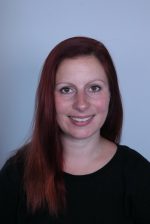
Jean Nitzke
Job profiles and required competences in the age of post-editing
The professional translation market is changing due to the ongoing digitalisation and the increasing application of artificial intelligence. Simultaneously, the demand for professional translations is continuously growing (csa-research.com 2019¹). Machine translation (MT) systems are used widely to create draft translations that are then post-edited (PE) to make the translation processes more efficient. Ideally, this which creates a win-win situation for both translator and client. Hence, professional translators must adapt to new market requirements to stay up-to-date and profitable.
As presented in Nitzke et al. (2019), many competences for PE overlap with those presented in translation and revision competence models (PACTE (2005), EMT Expert Group (2009), Göpferich (2009), or Robert et al. (2017)), some need to be adapted, others are additional. Building on this initial model, I want to present a revised model for PE competences that we developed to better suit aspects of practical PE. Translation competences (including bilingual, extralinguistic, and research competences) build the foundation of our PE competence model. From there, three columns present PE specific competences, namely error handling, MT engineering, and consulting competences. The model is completed by what we call PE soft skills.
Further, I will present three potential job profiles that are in line with the columns of the model. These job profiles are promising perspectives for translation students and professional translators who want to position themselves on the changing market. Finally, I want to discuss the implications for translation curricula and what is needed to prepare students for the presented job profiles at universities or additional training for professional translators who want to adapt to those job profiles.
Keywords: post-editing competences, competence model, job profiles
References:
- csa-research.com (2019) “Global Market for Outsourced Translation and Interpreting Services and Technology to Reach US$49.60 Billion in 2019.” https://csa-research.com/More/Media/Press-Releases/ArticleID/546/Global-Market-for-Outsourced-Translation-and-Interpreting-Services-and-Technology-to-Reach-US-49-60-Billion-in-2019, last accessed 07/10/2020
- EMT Expert Group. 2009. “Competences for Professional Translators, Experts in Multilingual and Multimedia Communication”. European Master’s in Translation (EMT). http://ec.europa.eu/dgs/translation/programmes/emt/key_documents/emt_competences_translators_en.pdf.
- Göpferich, Susanne. 2009. “Towards a Model of Translation Competence and Its Acquisition: The Longitudinal Study TransComp”. Behind the Mind: Methods, Models and Results in Translation Process Research 4 (4): 11–37.
- Nitzke, Jean, Silvia Hansen-Schirra, and Carmen Canfora. “Risk management and post-editing competence.” Journal of specialised translation 31. 2019: 239-259.
- PACTE, Grup. 2005. “Investigating Translation Competence”. Meta: Journal Des Traducteurs 50 (2): 0609–19.
- Robert, Isabelle S, Aline Remael, and Jim JJ Ureel. 2017. “Towards a Model of Translation Revision Competence”. The Interpreter and Translator Trainer 11 (1): 1–19.
Jean Nitzke is an associate professor for translation with a focus on translation technology at the University of Agder, Norway. She was a lecturer and researcher at the faculty for translation studies, linguistics, and cultural studies in Germersheim, Johannes Gutenberg University Mainz, Germany from 2012-2019 and 2020-2021 and substituted a full professor position in translation studies at the University of Hildesheim, Germany, from 2019-2020. Her main teaching and research interests are post-editing machine translation, translation technologies, domain-specific translation, cognitive translation studies, and translations into the foreign language.
Sponsors' Leadership Talk Presenters
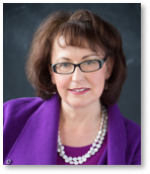
Diana Ballard
GOLD Sponsor:

In the age of value engineering, how do we deliver more with less?
to follow
Diana Ballard has been working in the localization industry over 25 years. Early years spent in manufacturing environments managing multilingual information led to Diana joining the language service and technology industry where she has worked internationally in sales, marketing, business development and account management. Based in the UK, Diana reports into STAR AG Headquarters, Switzerland and promotes STAR services and technologies to unify the end-to-end information lifecycle.
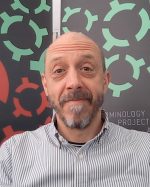
Jean-Françoise Richard
GOLD Sponsor:

What’s changed and what hasn’t in forty years of translation technology
Many things have changed in the way translators work over the past 40 years. IBM Selectric typewriters and paper dictionaries have made way for fax machines, Dictaphones, email, Internet, translation memories and neural machine translation. But many things, like time spent researching and tight deadlines, have not changed at all. Meanwhile, demand for translation keeps rising. How can technology help, and what are its limits?
Jean-Françoise Richard
Having a background in automated productivity and in electronics, I initially started my career in 1985 as a Computer Aided Design (CAD) technician before devoting myself to the field of computer aided translation tools (CAT) in 1994. Since then, and through different experiences of work, I acquired expertise in translation memory systems, terminology extraction tools, terminology management, machine translation, full text, bitexts and project management systems.
In 1994, I founded BridgeTerm (Now a Translation Management System) which acted as CAT broker. During my career and over the years, I developed and improved SynchroTerm, a bilingual terminology extraction tool allowing to feed terminology databases from translated documents.
In September 2006, Terminotix acquired SynchroTerm and I joined the team where I occupied the Sales Director position.
In April 2010, I acquired the company through a management buyout process and since then, I am the president of Terminotix. During the last two years, I have conducted research on generating automatically high quality alignments in any language pair in order to feed Neural Machine Translation engines, bilingual concordancers.
Early in 2020 and during the pandemic, I developed a bilingual website search engine called WeBiSearch available for free and for linguistic services. In Spring 2021, I released the Terminotix plugin for Windows allowing to translate from inside any application.

Alita Steinberg
GOLD Sponsor:

Our support to TC Conferences
to follow
Graciela (Alita) Steinberg is a translator, editor and language consultant living in Buenos Aires, Argentina. She has a Degree as Legal Translator and has lectured Translation for Marketing & Advertising and Spanish Legal Translation at New York University.
Understanding the profession as a lifelong learning journey, Graciela currently combines her active translation work with courses (FLACSO University) and research on inclusive language and the new challenges faced by translators.
Alita is co-founder of Tradulex, leads its Argentina Branch and works as Spanish language coordinator of the Tradulex Network, dealing with high volume projects for many international organizations. She is also a long-time United Nations translator.
She has been a Board Member of the Buenos Aires Sworn Translators’ Association and a Council Member of FIT. She is currently a member of the Editorial Board of Babel (FIT Translation Journal) and has been a member of the international jury awarding FIT’s Astrid Lindgren Prize for several years.

Daniel Brockmann
SILVER Sponsor:

Cloud translation engines:
Bringing together all translation resources into a single seamless entity
Evolving Linguistic Resource Management in Translation
Translators have been leveraging terminology and translation memory for decades, and are increasingly recognizing the benefits of machine translation. When combined, these linguistic assets can dramatically increase productivity. But managing multiple resources can become cumbersome and complicated. In this session, Daniel Brockmann will demonstrate a better approach through cloud-based translation engines, where translators and project managers can organize multiple linguistic resources into a single seamless entity to leverage the best linguistic data for the translation work at hand.
Daniel Brockmann is Principal Product Manager at Trados. Together with his team, Daniel product-manages a wide range of applications for translators, project managers and terminologists: the translation productivity environment Trados Studio, the software localization solution Passolo, the terminology management suite MultiTerm, the collaboration solution Studio GroupShare as well as the App Store and the next generation cloud based platform, Trados Live.
